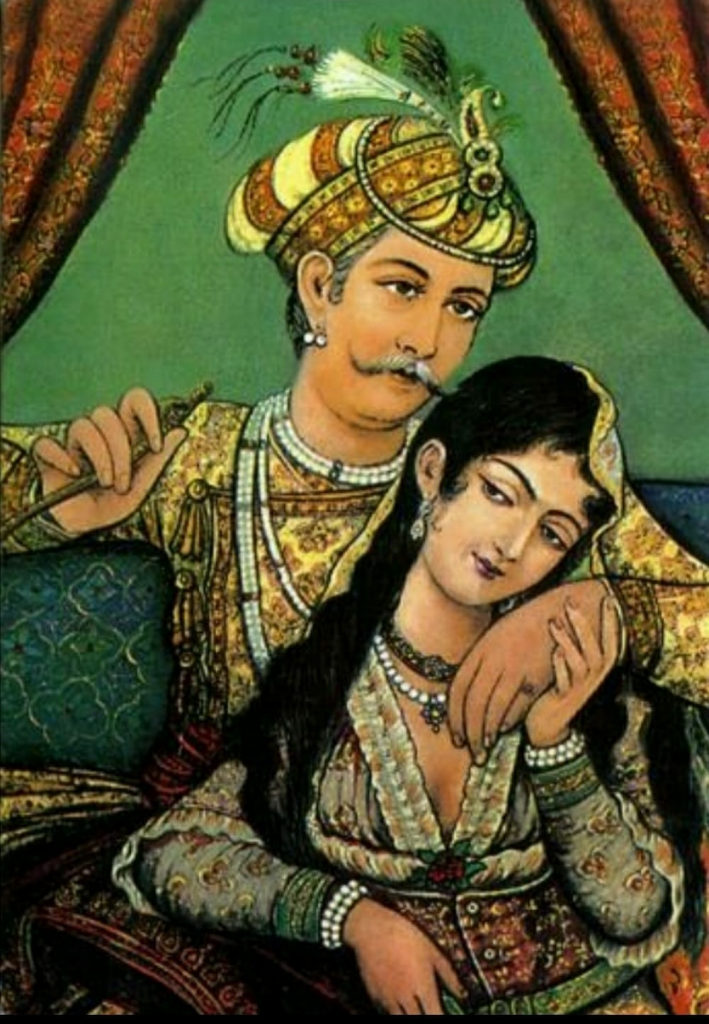The Tomb of Mariam-uz-Zamani or Mariam’s Tomb is the mausoleum of Mariam-uz-Zamani, the favorite and most influential consort of the Mughal Emperor Akbar.
The tomb was built by her son Jahangir, in her memory between years 1623-1627 and is located in Sikandra, next to the Akbar’s Tomb, in the direction of Mathura. She stands as the only wife of Akbar buried closed to him.

History
Mariam-uz-Zamani was born a Rajput princess named Harkha Bai, the eldest daughter of Raja Bharmal of Amer..
She was married to Emperor Akbar in 1562 CE and was honored with the title Mariam-uz-Zamani (‘Mary/Compassionate of the Age’) after she gave birth to her third son, Jahangir in the year 1569 CE.

The Empress was bestowed with an honorific name Wali Nimat begum (‘Gift of God’) by Akbar in the year 1564 CE. She was honored with several titles by Akbar named Mallika-e-Hindustan (lit. ‘Empress of Hindustan’), Mallika-e-Muezamma (lit. ‘Exalted Empress’), and Shahi Begum (lit. ‘Imperial Begum’).
The Empress was an extremely beautiful woman said to possess uncommon beauty. She was an intelligent, amiable, kind, virtuous, and secular woman, widely known for her beauty and grace.
She died on 19 May 1623 in Agra and was buried close to her husband. There is no concrete evidence stating the reason for her death however it is believed to be because of sickness.
Her son Jahangir commissioned a tomb for her between 1623 and 1627 CE. The tomb is just next to the Akbar’s tomb, the only nearest of all the tombs of his other wives. She is known to be the first and last love of Emperor Akbar.
Alongside Empress Mariam-uz-Zamani, her granddaughter Bahar Banu Begum is also buried in the same mausoleum insinuating that she might have been her favorite.


Architecture
The structure was originally an open baradari (pleasure pavilion) under Sikander Lodi, who built it in 1495 AD.
It was adopted by the Mughals in 1623 AD and was converted into a tomb by making a crypt below the central compartment and remodeling it substantially with heavy additions of embellishments like frescoes and floral carvings.
The mausoleum contains three tombstones : one in the underground mortuary chamber, which is the grave itself; the cenotaph above it; and another cenotaph on the terrace.
The ground floor consists of some forty chambers, which bear faint traces of paintings on plastered walls. The center of the ground floor houses the cenotaph of Empress Mariam-uz-Zamani.
The white plaster was added during British rule who used this mausoleum as a printing press shadowing the former beauty of this tomb.
This square tomb stands in the center of the Mughal garden. It is built on a raised platform with stairs on its northern and southern sides.
The two corridors running from east to west and from north to south divide the structure into nine sections that are further subdivided into smaller compartments.
The largest one is at the center, four smaller square ones at the corners, and four oblong ones in their midst. Massive piers have been used to support the broad arches and vaulted ceilings. The tomb is built of brick and mortar, and finished with stucco.
The tomb also contains the work of the Mughals, who remodeled them by adding chhatris and chhaparkhats. The tomb has four massive octagonal chhatris on its four corners and four oblongs chhaparkhats in the center of the four sides.
Each chhatri is made out of red sandstone with a white dome and stands on a square platform. The domes are crowned with an inverted lotus or padma kosha.
Brackets have been used to support the internal lintels and external chhajja, five on each pillar, making a total of 40 brackets in one chhatri. Each chhaparkhat is rectangular and has eight pillars with a similar cluster of brackets and a white roof.
These chhatris and chhaparkhats are the most important ornament of the whole composition. The rectangular chhaparkhats with eight pillars and a cluster of brackets resemble the corner cupolas.
The tomb does not have a dome. The mausoleum is of architectural importance in the category of Mughal tombs without a dome.
The facades (exterior) of the building were reconstructed with red sandstone panels and a chhajja with the addition of duchhati (mezzanine floors) at the corners by the Mughals.
On each facade, there is a rectangular structure which projects forward and has a pointy arch in it. It is flanked on either side by wings, which consist of three arches and a set of double arches, one over the other, thus accommodating a duchhatti at each corner of the building.
The wings are protected by chhajjas.. The duchhatti are accessible by stairways.
Another important aspect of the tomb is that it is identical both in the front and the rear. Unlike other Mughal era structures, the back entrance is not a dummy but an actual entrance.
Ornamentation
The red sandstone facade and panels with a variety of decorative designs, such as floral patterns, tell a lot about the former splendor of this tomb. There are chevron patterns in the nook shafts, wine vases within sunk niches, and geometrical floral designs gracing the piers between the arches.
The chhatris have beautifully carved columns with hexagonal bases. The stone brackets occupy the spaces just below the chajja, while beautifully carved friezes are above it.
And white marble is inlaid underneath the dome. The friezes of the chhaparkhats were originally covered with glazed tiles and have a pyramidal roof. Traces of floral paintings can still be seen in the corners that tell about the former beauty of the tomb.
